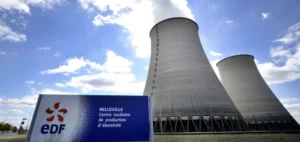The Sri Lankan Ministry of Energy announced that the price of petrol would be reduced by 40 rupees to 370 rupees (EUR 1.03) per liter from Monday evening, following an equivalent 10% reduction in early October. But the price of regular gasoline is still twice as high as it was before the crisis began, and diesel is still three and a half times more expensive than it was in December 2021.
The World Bank has warned that the economic recession will be worse than the 8.7 percent forecast by the Central Bank of Sri Lanka for 2022. In its latest note, published last week, the World Bank forecasts a 4.2% contraction in GDP in 2023.
The country of 22 million people is facing a deep economic crisis, suffering for months from shortages of food, fuel, raw materials and medicine. The wait at the pumps has been reduced to a few hours in recent weeks, but fuel is still strictly rationed as the shortage of dollars needed to finance imports of essential goods persists.
Public transport was also paralyzed due to the lack of diesel, but services were almost back to normal by Monday. Prices of goods and services continue to soar. Inflation is close to 70%. After the Covid pandemic that devastated the island’s tourism sector, the crisis resulting from the Russian invasion of Ukraine is now taking its toll on Sri Lanka’s economy.
President Ranil Wickremesinghe has reversed some of the tax cuts made by the government of his deposed predecessor Gotabaya Rajapaksa. And it has introduced new measures to bail out the public finances, including a 2.5% levy on the turnover of companies for social security contributions (SSCL).
The South Asian island, which defaulted on its $51 billion foreign debt in mid-April, is hoping for a $2.9 billion IMF bailout contingent on debt restructuring and final approval by the IMF board.






















